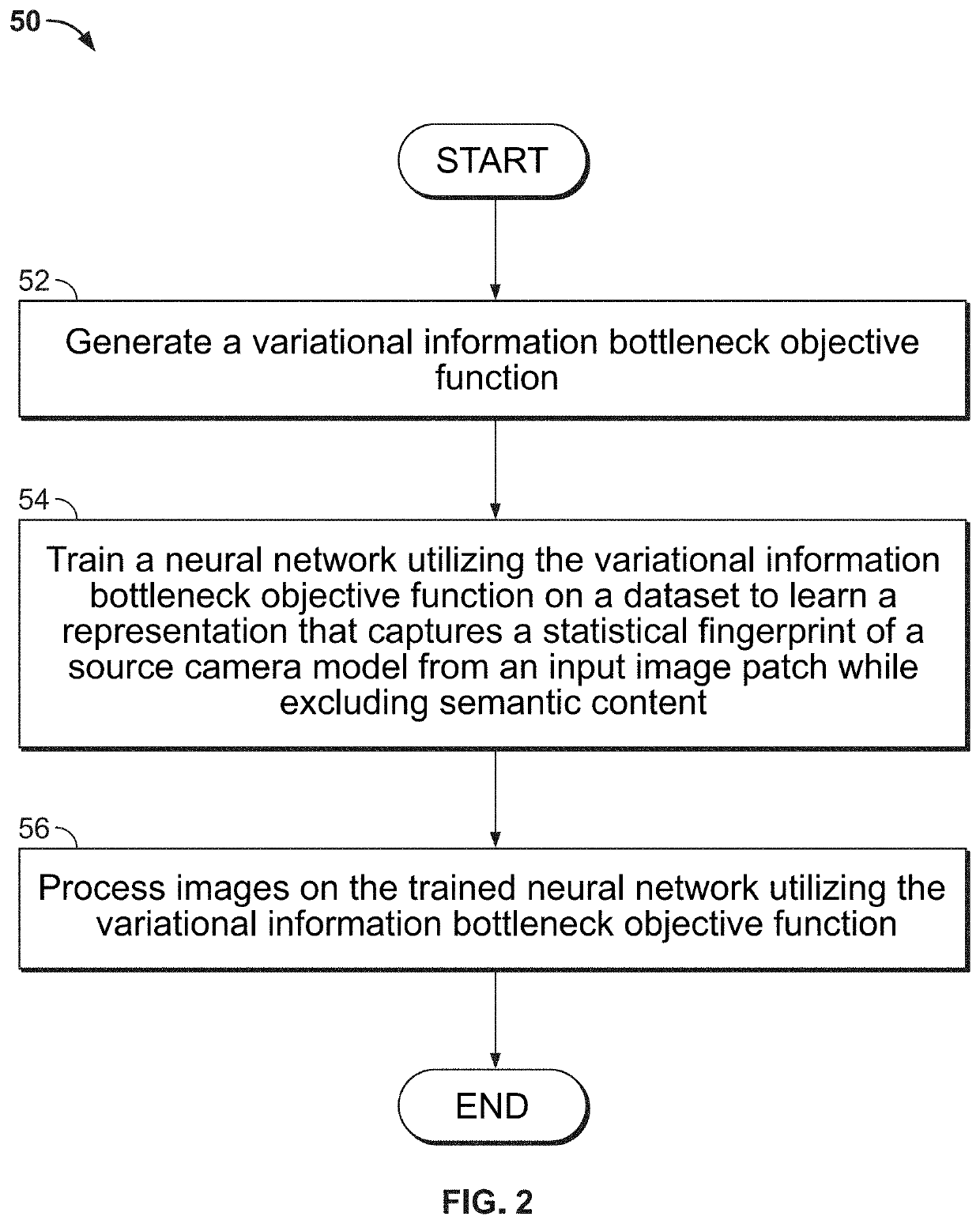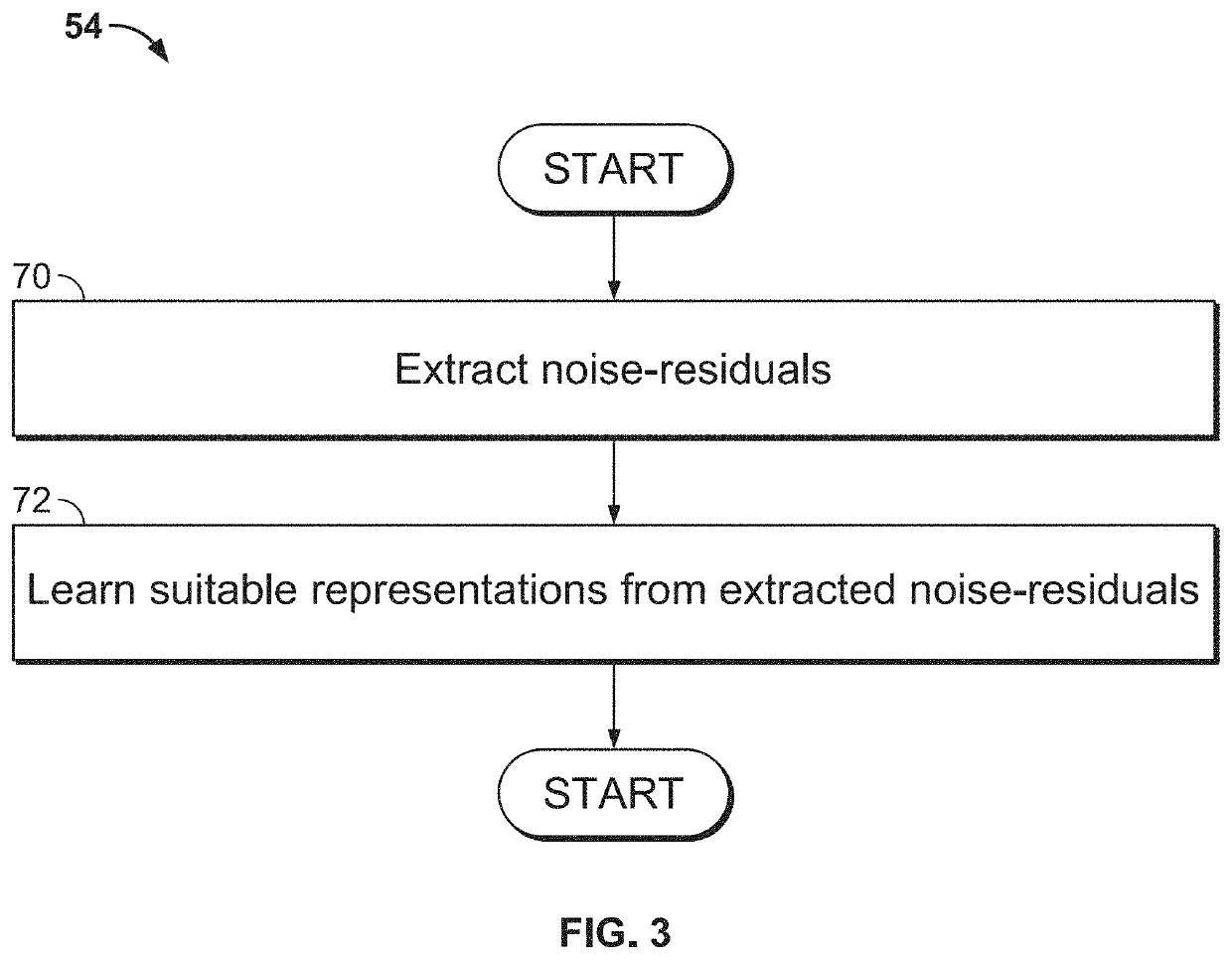Machine Learning Systems and Methods for Improved Localization of Image Forgery
a machine learning and image forgery technology, applied in the field of machine learning, can solve the problems of limited success in solving image forgery operations and the content of photo-realistically altered digital images and videos, and achieve the effect of improving the localization of image forgery
- Summary
- Abstract
- Description
- Claims
- Application Information
AI Technical Summary
Benefits of technology
Problems solved by technology
Method used
Image
Examples
Embodiment Construction
[0019]The present disclosure relates to systems and methods for improved localization of image forgery, as described in detail below in connection with FIGS. 1-12.
[0020]By way of background, the image formation process broadly consists of three stages: (1) sensor measurements; (2) in-camera processing; and (3) storage which may include compression. The image formation process is unique for every camera model and yields subtle distortions and noise patterns (i.e., a digital camera model fingerprint) in the image which are invisible to the eye. These subtle distortions and noise patterns are useful in forensic applications because they are specific to each camera model. Sensor pattern noise originates from imperfections in the sensor itself and has shown to be sensitive to several manipulation types. Accordingly, sensor pattern noise has been utilized for the detection and localization of forgeries. However, sensor pattern noise is difficult to detect in image regions with high textur...
PUM
 Login to View More
Login to View More Abstract
Description
Claims
Application Information
 Login to View More
Login to View More - R&D
- Intellectual Property
- Life Sciences
- Materials
- Tech Scout
- Unparalleled Data Quality
- Higher Quality Content
- 60% Fewer Hallucinations
Browse by: Latest US Patents, China's latest patents, Technical Efficacy Thesaurus, Application Domain, Technology Topic, Popular Technical Reports.
© 2025 PatSnap. All rights reserved.Legal|Privacy policy|Modern Slavery Act Transparency Statement|Sitemap|About US| Contact US: help@patsnap.com



